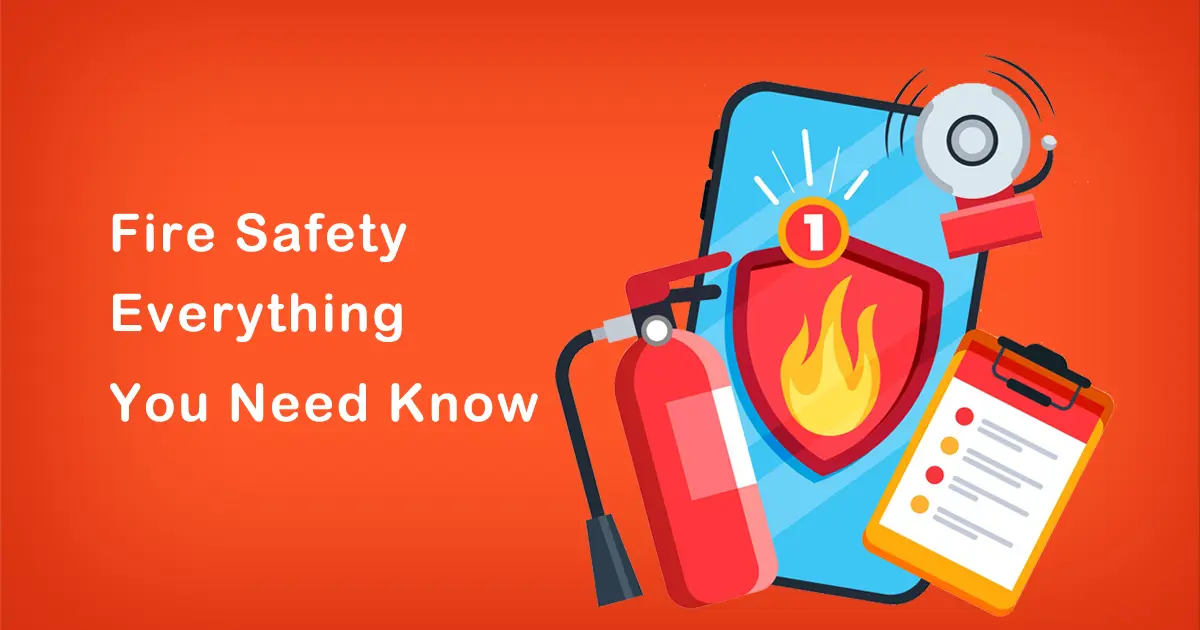Whether you’re a homeowner or a business owner, fire safety management is critical for ensuring the safety of people, property, and assets. Identifying fire hazards and implementing effective fire risk control measures are essential steps in reducing the risk of fire. At Gulf Academy Safety, we focus on helping individuals and businesses manage fire safety risks with comprehensive strategies. This guide will outline the key elements of fire safety management and provide practical tips on how to manage fire risks in residential and commercial environments.
What Are the 5 Key Elements of Fire Safety Management?
Effective fire safety management relies on several key elements that work together to prevent fires and ensure safe evacuation in case of an emergency. The five key elements are:
1. Fire Risk Assessment
Regular fire risk assessments help identify potential fire hazards and allow for timely interventions to reduce the risk of fire.
2. Fire Prevention Measures
Implement fire prevention strategies such as maintaining electrical equipment, safely storing flammable materials, and ensuring proper ventilation.
3. Fire Protection Systems
Install and maintain fire alarms, extinguishers, and sprinkler systems to detect and control fires quickly.
4. Emergency Evacuation Plans
Ensure clear, well-marked emergency exits and evacuation routes, and conduct regular fire drills for staff or household members.
5. Training and Awareness
Provide fire safety training for employees or household members to ensure everyone knows how to respond in an emergency.
These elements form the foundation of fire safety management, helping you minimize the risk of fire and ensure safety.
View more content: Enroll in fire risk management training | Level 6 NVQ Diploma in Safety Management

How Do You Manage Fire Risks?
Managing fire risks involves a proactive approach to both preventing and controlling potential fire hazards. Here’s how to effectively manage fire risks:
1. Identify Fire Hazards
Start by conducting a thorough inspection of your home or business to identify fire hazards, such as faulty electrical wiring, flammable materials, or heat sources.
2. Implement Fire Safety Measures
Once hazards are identified, put the appropriate fire risk control measures in place. This could involve installing fire alarms, extinguishers, and proper storage for flammable items.
3. Regular Maintenance
Ensure that all fire protection systems, including alarms, extinguishers, and sprinklers, are regularly inspected and maintained to function effectively during emergencies.
4. Develop a Fire Emergency Plan
Create a detailed fire emergency plan that outlines evacuation procedures and ensure all occupants are aware of what to do in case of a fire.
5. Ongoing Training
Provide continuous fire safety training and refreshers to ensure that everyone knows how to respond to a fire, including using extinguishers and locating emergency exits.
By following these steps, you can actively manage fire risk control and improve overall safety in both residential and commercial settings.
Access additional information: Best NEBOSH process safety management virtual | IOSH Managing Safely course with certification
Conclusion
Managing fire risks is an ongoing process that requires attention to detail and proactive measures. Whether for a home or a business, effective fire safety management involves identify fire hazards, implementing fire risk control measures, and ensuring everyone is trained to respond in an emergency. At Gulf Academy Safety, we provide expert advice and solutions to help you minimize fire risks and protect your property. Contact us today to learn how we can assist in improving your elements of fire safety management plan!




